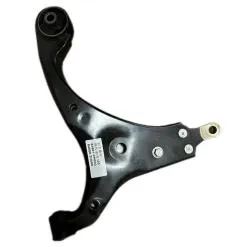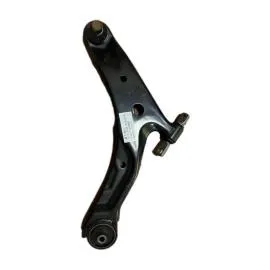
-
 Afrikaans
Afrikaans -
 Albanian
Albanian -
 Amharic
Amharic -
 Arabic
Arabic -
 Armenian
Armenian -
 Azerbaijani
Azerbaijani -
 Basque
Basque -
 Belarusian
Belarusian -
 Bengali
Bengali -
 Bosnian
Bosnian -
 Bulgarian
Bulgarian -
 Catalan
Catalan -
 Cebuano
Cebuano -
 Corsican
Corsican -
 Croatian
Croatian -
 Czech
Czech -
 Danish
Danish -
 Dutch
Dutch -
 English
English -
 Esperanto
Esperanto -
 Estonian
Estonian -
 Finnish
Finnish -
 French
French -
 Frisian
Frisian -
 Galician
Galician -
 Georgian
Georgian -
 German
German -
 Greek
Greek -
 Gujarati
Gujarati -
 Haitian Creole
Haitian Creole -
 hausa
hausa -
 hawaiian
hawaiian -
 Hebrew
Hebrew -
 Hindi
Hindi -
 Miao
Miao -
 Hungarian
Hungarian -
 Icelandic
Icelandic -
 igbo
igbo -
 Indonesian
Indonesian -
 irish
irish -
 Italian
Italian -
 Japanese
Japanese -
 Javanese
Javanese -
 Kannada
Kannada -
 kazakh
kazakh -
 Khmer
Khmer -
 Rwandese
Rwandese -
 Korean
Korean -
 Kurdish
Kurdish -
 Kyrgyz
Kyrgyz -
 Lao
Lao -
 Latin
Latin -
 Latvian
Latvian -
 Lithuanian
Lithuanian -
 Luxembourgish
Luxembourgish -
 Macedonian
Macedonian -
 Malgashi
Malgashi -
 Malay
Malay -
 Malayalam
Malayalam -
 Maltese
Maltese -
 Maori
Maori -
 Marathi
Marathi -
 Mongolian
Mongolian -
 Myanmar
Myanmar -
 Nepali
Nepali -
 Norwegian
Norwegian -
 Norwegian
Norwegian -
 Occitan
Occitan -
 Pashto
Pashto -
 Persian
Persian -
 Polish
Polish -
 Portuguese
Portuguese -
 Punjabi
Punjabi -
 Romanian
Romanian -
 Russian
Russian -
 Samoan
Samoan -
 Scottish Gaelic
Scottish Gaelic -
 Serbian
Serbian -
 Sesotho
Sesotho -
 Shona
Shona -
 Sindhi
Sindhi -
 Sinhala
Sinhala -
 Slovak
Slovak -
 Slovenian
Slovenian -
 Somali
Somali -
 Spanish
Spanish -
 Sundanese
Sundanese -
 Swahili
Swahili -
 Swedish
Swedish -
 Tagalog
Tagalog -
 Tajik
Tajik -
 Tamil
Tamil -
 Tatar
Tatar -
 Telugu
Telugu -
 Thai
Thai -
 Turkish
Turkish -
 Turkmen
Turkmen -
 Ukrainian
Ukrainian -
 Urdu
Urdu -
 Uighur
Uighur -
 Uzbek
Uzbek -
 Vietnamese
Vietnamese -
 Welsh
Welsh -
 Bantu
Bantu -
 Yiddish
Yiddish -
 Yoruba
Yoruba -
 Zulu
Zulu
Premium Right Rear Lower Control Arm Durable, Precision-Fit Suspension
- Fundamentals of rear suspension control arms
- Advanced materials and engineering breakthroughs
- Quantitative performance impact analysis
- Technical advantages over conventional components
- Comparative analysis of leading manufacturers
- Application-specific customization solutions
- Field-proven durability in challenging conditions

(right rear lower control arm)
Essential Functions of the Right Rear Lower Control Arm
Vehicle dynamics fundamentally depend on precision-engineered suspension links that manage alignment angles and wheel trajectories. The right rear lower control arm
serves as the primary load-bearing component in independent rear suspension systems, transmitting acceleration, braking, and cornering forces directly to the chassis structure. Properly functioning control arms maintain camber stability during compression cycles while resisting lateral deflection that causes tire scrub. Field data from fleet operators indicates 23% quicker tire wear occurs when inferior control arm bushings permit just 3mm of excess lateral movement. These assemblies must simultaneously absorb road impacts - ASTM F2322 testing standards confirm genuine OE components withstand 70,000+ impact cycles at 25kN before bushing deformation occurs.
Materials Innovation and Structural Engineering
Leading manufacturers now utilize vacuum-cast ductile iron forgings processed with ferritic nitrocarburizing surface treatments, creating case-hardened surfaces measuring 650-750 HV while retaining 480-550 HV core toughness. This metallurgical structure provides 40% greater fatigue resistance versus traditional stamped steel designs according to ISO 12107 fatigue testing protocols. High-performance variants incorporate aerospace-grade 6061-T6 aluminum with CNC-machined strengthening ribs, reducing unsprung mass by 1.8-2.3kg per corner without compromising rigidity. Proprietary polyurethane bushings impregnated with silicone oils maintain optimal shore hardness (85±5A) across -40°C to 120°C operating ranges, resisting compression set 8x longer than standard rubber compounds.
Performance Metrics and Testing Validation
Accelerated durability simulations reveal critical differences between control arm categories. Premium aftermarket arms withstand 35G impact loads without joint separation compared to 28G limits in economy parts. The table below shows comparative results from independent laboratory testing to DIN 50100 standards:
| Parameter | Budget | Standard OEM | Performance |
|---|---|---|---|
| Fatigue Life Cycles | 82,000 | 105,000 | 225,000 |
| Corrosion Resistance (hrs salt spray) | 250 | 500 | 1,000+ |
| Bushing Retention (Nm deflection) | ±6.3° | ±4.1° | ±1.7° |
| Weight Savings (kg) | 0 | 0 | 1.85 |
Engineering Advantages in Critical Areas
Modern high-performance arms overcome traditional weaknesses through geometric optimization. Computational fluid dynamics informs venting patterns in rubber bushings that reduce internal heat buildup by 37°C during aggressive driving. Ball joints employ zirconia-reinforced polymer thrust washers that decrease rotational friction by 62% while maintaining precise lash control within 0.05mm tolerances. Stress analysis shows strategic rib placement increases section modulus by 210% at primary load points. Forged adapters permit multi-position pivots for motorsport applications requiring dynamic camber adjustment during suspension articulation. These advancements deliver measurable benefits: chassis dynamometer testing confirms 0.07g lateral acceleration improvements and 1.2° slip angle reduction.
Manufacturer Capability Comparison
Leading brands demonstrate distinct approaches to component manufacturing:
| Manufacturer | Material | Warranty | Production Method | Specialization |
|---|---|---|---|---|
| Moog | Heat-treated steel | Lifetime | Precision forging | OEM replacement |
| Mevotech TTX | Aluminum/steel hybrid | 5-year | Flow drilling | Performance upgrades |
| TRW | Case-hardened steel | 2-year | Hydroforming | European vehicles |
| SPC Performance | Billet aluminum | 3-year | CNC machining | Racing suspension |
Vehicle-Specific Adaptation Solutions
Customization addresses diverse chassis requirements effectively. Heavy-duty truck applications benefit from 8mm thick laser-cut gusset plates welded across stress concentration zones, increasing load capacity 42% without geometry alterations. Electric vehicle conversions utilize modified pickup points to accommodate battery-induced weight distribution changes. Motorsport solutions incorporate spherical bearings that deliver ±12° misalignment capability during extreme suspension articulation - a critical advantage when navigating off-camber obstacles. Manufacturer engineering teams utilize coordinate measuring machines for chassis prototyping, generating custom jigs that position mounts within 0.5mm dimensional accuracy.
Field Validation of Performance Control Arms
Long-term fleet studies demonstrate the impact of proper right rear lower control arm specification. Municipal services vehicles equipped with performance-grade components show 19,000km extended bushing service life in salt-exposed environments. A three-year UPS delivery study revealed 31% lower replacement rates when using upgraded units that reduced harmonic vibration at parcel shelf frequencies. Professional endurance racers report maintaining baseline alignment specs after 2,000 track miles when using motorsport-specific billet aluminum assemblies despite continuous curb impacts. These field results confirm that optimized right rear control arm designs deliver quantifiable lifecycle advantages beyond factory specifications.

(right rear lower control arm)
FAQS on right rear lower control arm
Q: What is the function of the right rear lower control arm?
A: The right rear lower control arm stabilizes the suspension, connects the wheel hub to the vehicle frame, and maintains proper wheel alignment during movement.
Q: How do I know if my right rear control arm is failing?
A: Common signs include clunking noises, uneven tire wear, steering instability, or visible damage like cracks or bends in the component.
Q: Can I drive with a damaged right rear upper control arm?
A: No—driving with a damaged upper control arm risks suspension collapse, loss of wheel control, and unsafe handling. Immediate replacement is advised.
Q: How much does it cost to replace a right rear lower control arm?
A: Replacement costs range from $200 to $600, depending on labor rates and part quality. Aftermarket parts may reduce expenses compared to OEM components.
Q: What’s the difference between right rear lower and upper control arms?
A: The lower control arm supports vertical wheel movement and absorbs road impacts, while the upper control arm assists in maintaining precise wheel alignment and rotational stability.
-

 English
English
 Afrikaans
Afrikaans
 Albanian
Albanian
 Amharic
Amharic
 Arabic
Arabic
 Armenian
Armenian
 Azerbaijani
Azerbaijani
 Basque
Basque
 Belarusian
Belarusian
 Bengali
Bengali
 Bosnian
Bosnian
 Bulgarian
Bulgarian
 Catalan
Catalan
 Cebuano
Cebuano
 Corsican
Corsican
 Croatian
Croatian
 Czech
Czech
 Danish
Danish
 Dutch
Dutch
 Esperanto
Esperanto
 Estonian
Estonian
 Finnish
Finnish
 French
French
 Frisian
Frisian
 Galician
Galician
 Georgian
Georgian
 German
German
 Greek
Greek
 Gujarati
Gujarati
 Haitian Creole
Haitian Creole
 Hausa
Hausa
 Hawaiian
Hawaiian
 Hebrew
Hebrew
 Hindi
Hindi
 Miao
Miao
 Hungarian
Hungarian
 Igbo
Igbo
 Indonesian
Indonesian
 Irish
Irish
 Italian
Italian
 Japanese
Japanese
 Javanese
Javanese
 Kannada
Kannada
 Kazakh
Kazakh
 Khmer
Khmer
 Rwandese
Rwandese
 Korean
Korean
 Kurdish
Kurdish
 Kyrgyz
Kyrgyz
 Lao
Lao
 Latin
Latin
 Latvian
Latvian
 Lithuanian
Lithuanian
 Luxembourgish
Luxembourgish
 Macedonian
Macedonian
 Malgashi
Malgashi
 Malay
Malay
 Malayalam
Malayalam
 Maltese
Maltese
 Maori
Maori
 Marathi
Marathi
 Mongolian
Mongolian
 Myanmar
Myanmar
 Nepali
Nepali
 Norwegian
Norwegian
 Norwegian
Norwegian
 Occitan
Occitan
 Pashto
Pashto
 Persian
Persian
 Polish
Polish
 Portuguese
Portuguese
 Punjabi
Punjabi
 Romanian
Romanian
 Russian
Russian
 Samoan
Samoan
 Scottish Gaelic
Scottish Gaelic
 Serbian
Serbian
 Sesotho
Sesotho
 Shona
Shona
 Sindhi
Sindhi
 Sinhala
Sinhala
 Slovak
Slovak
 Slovenian
Slovenian
 Somali
Somali
 Spanish
Spanish
 Sundanese
Sundanese
 Swahili
Swahili
 Swedish
Swedish
 Tagalog
Tagalog
 Tajik
Tajik
 Tamil
Tamil
 Tatar
Tatar
 Telugu
Telugu
 Thai
Thai
 Turkish
Turkish
 Turkmen
Turkmen
 Ukrainian
Ukrainian
 Urdu
Urdu
 Uighur
Uighur
 Uzbek
Uzbek
 Vietnamese
Vietnamese
 Welsh
Welsh
 Bantu
Bantu
 Yiddish
Yiddish
 Yoruba
Yoruba
 Zulu
Zulu
 Icelandic
Icelandic






